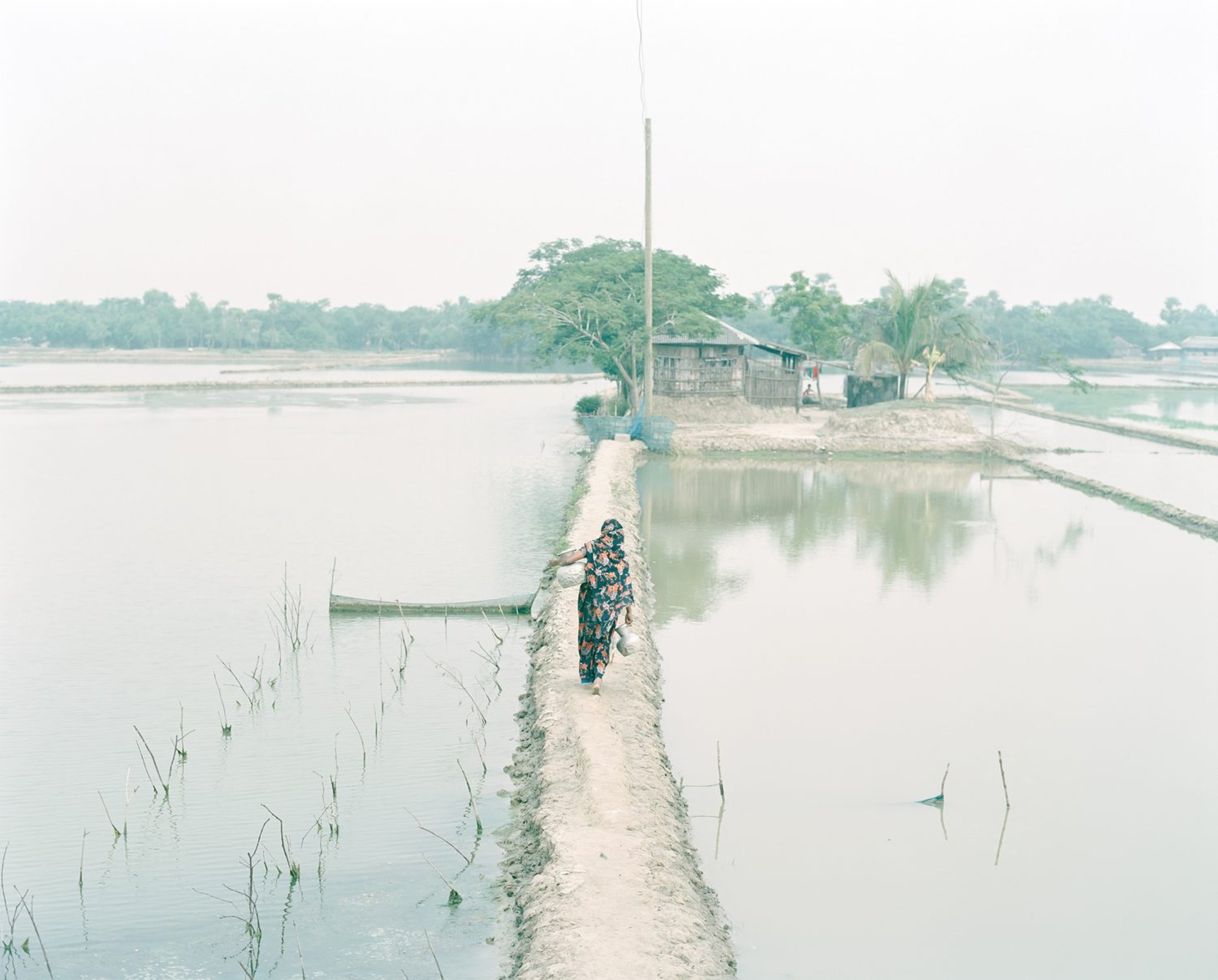Images of climate-related disasters fill our screens on a near-daily basis. Skies lit lurid red and choked by wildfire smoke, neighborhoods flattened by hurricanes as far as the horizon line, and flood waters stranding people on their roofs are becoming common sights in the media. Yet in an age of endless news, where one disaster is replaced by the next, these images—no matter how frightening—can begin to blur together as our attention span is continually shifted onto the next horrific spectacle.

For Japanese photographer Shunta Kimura, moving beyond the sensational is paramount to understanding the effects of this radical, violent change. Rather than focusing on the event itself, Kimura is interested in life in between disasters. What does it look like to live in this crisis on a daily basis? How does one adapt? How does one survive? In his series Living in the Transition he turns his camera on this liminal space.
Kimura began asking himself these questions when he was in Bangladesh working on another photographic project about Rohingya refugees. Denied the permission he needed to pursue the work, he found his eyes opened to the heavy toll climate change has taken on the South Asian country. According to the 2021 Global Climate Risk Index, Bangladesh, a country of close to 170 million people, holds the 7th spot on the list of countries most vulnerable to climate catastrophe.

With its numerous rivers and vast stretches of coastline, Bangladesh is home to the Sundarbans, the largest mangrove forest in the world. Mangroves are rich in biodiversity and protect areas from the effects of cyclones, yet as these storms intensify so too does the threat of these forests flooding. As the dry season gets drier, flooding becomes even more dangerous during the wet season. Various reports have stated that by 2050 close to 11% of the country’s land will be overtaken by rising sea waters and one in seven residents will be displaced.

It is not only rural communities that are affected. “Population density is increasing with the influx of environmental refugees into urban areas,” says Kimura. “The capital of Bangladesh, Dhaka, is one of the most densely populated cities in the world. The depopulation of rural villages and other climate change issues such as damage to infrastructure, crop reduction, and the salinization of soil and water, have been identified as problems that are making people’s lives increasingly difficult.” Though his photographs largely capture those living in rural areas, he also ventures beyond the countryside, tracing the movement of climate migrants who have left to cities seeking work.

Using a color palette that feels like it has been bleached by the sun, Kimura captures the quiet moments and routine tasks that make up an ordinary day in these parts. People fetch water or fish, partake in household chores and wait for ferries, all in a landscape that is rapidly changing.
For the photographer, the soft, whitish grays of his images reflect his interest in capturing “people’s daily lives that calmly pass in a straightforward manner. I try to take photographs that express a slow tempo and silent atmosphere.” In discarding bright, vibrant tones he draws our attention to the underlying rhythm of a day. Photographed from a slight distance, Kimura’s images are scenes taken from life. The photographs might seem almost too lovely in their subtle tones and everyday themes but looking closely one sees the tell-tale signs of climate precarity—the eroded shores, the endless sandbags, and houses abandoned.

There is hope and purpose at the core of Kimura’s gentle images. He believes in the narrative power of photography.“I began working with photography when I first saw photographs of refugees in my student days,” he remembers. “I was attracted to the power of photography as an international visual language, which can record the voices of people in catastrophic situations around the world. Photography can convey messages from people who don’t have a way to tell their testimonies and tragic experiences.”
In one of his most striking images, a woman fishes in the Kholpetua River beyond a field of sandbags, placed there to prevent flooding; they have gradually sunk into the river. In another image a woman hangs linens on a clothesline outside her house, perched atop a spit of land that has been dramatically cut into by river erosion. More mundane scenes appear as well; children play, a man holds his child at the riverfront.

Through his photographs, Kimura hopes to show the resilience and adaptation of people in catastrophic situations. “I believe that these photographs can become a catalyst to know what is happening in this corner of Bangladesh, how this world has been changing due to the impacts of various issues, and how people are living in such situations even as they are inflicted by these severe and long-term burdens physically, mentally, and economically,” the photographer says.
Worlds away from the disaster imagery saturating the news, Kimura captures the reality of a world in transition and the people forced to find a way to coexist with crisis.
Editor’s note: Shunta Kimura is one of the 25 remarkable photographers we discovered this year via the LensCulture Emerging Talent Awards 2023.























